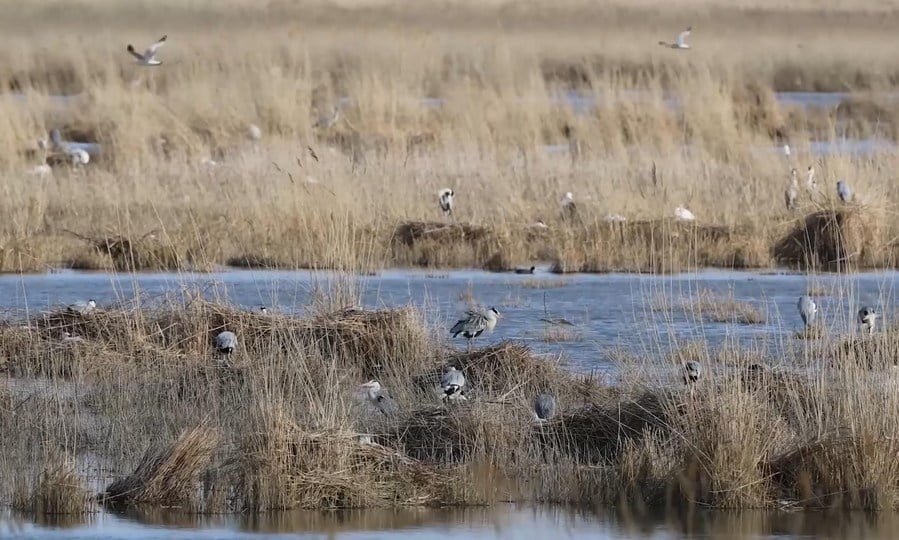[ad_1]

The screen shot shows migratory birds at the Hulun Lake wetland in Hulun Buir, north China’s Inner Mongolia Autonomous Region, May 13, 2021.(Xinhua/Wang Xuebing)
HOHHOT, Jan. 2 (Xinhua) — China’s fourth largest freshwater lake in the northern Inner Mongolia Autonomous Region has seen its water area expand, wetland ecology recover and biodiversity improve, thanks to beefed-up conservation efforts over the years.
The water area of Hulun Lake has expanded to 2,244.3 square km, an increase of nearly 500 square km from a decade ago, according to the Hulun Lake National Nature Reserve Administration in the city of Hulun Buir.
The lake’s water volume, meanwhile, has reached 13.97 billion cubic meters, a near-record high, the administration said.
The wetland ecology of the once-dwindling lake has gradually recovered and the biodiversity in the area has continued to improve. Since 2016, the number of bird species recorded in the area has increased from 333 to 345, and the number of mammal species has risen from 35 to 38.
Hulun Lake plays an important role in the ecological security of the grasslands in north China. It was included on the list of internationally important wetlands in 2002.
However, years of drought and excessive human activity led to the shrinking of the lake and surrounding wetlands, combined with a decline in the wildlife population.
To better protect Hulun Lake, Inner Mongolia has intensified a series of measures in recent years, such as enhancing grassland ecological protection, improving the industrial structure and restoring the wetland ecosystem.
In 2021, the city of Hulun Buir started implementing a five-year plan, with an investment of over 1.1 billion yuan (158 million U.S. dollars), for ecological and environmental protection in the Hulun Lake basin.
(Web editor: Cai Hairuo, Hongyu)
[ad_2]
Source link



